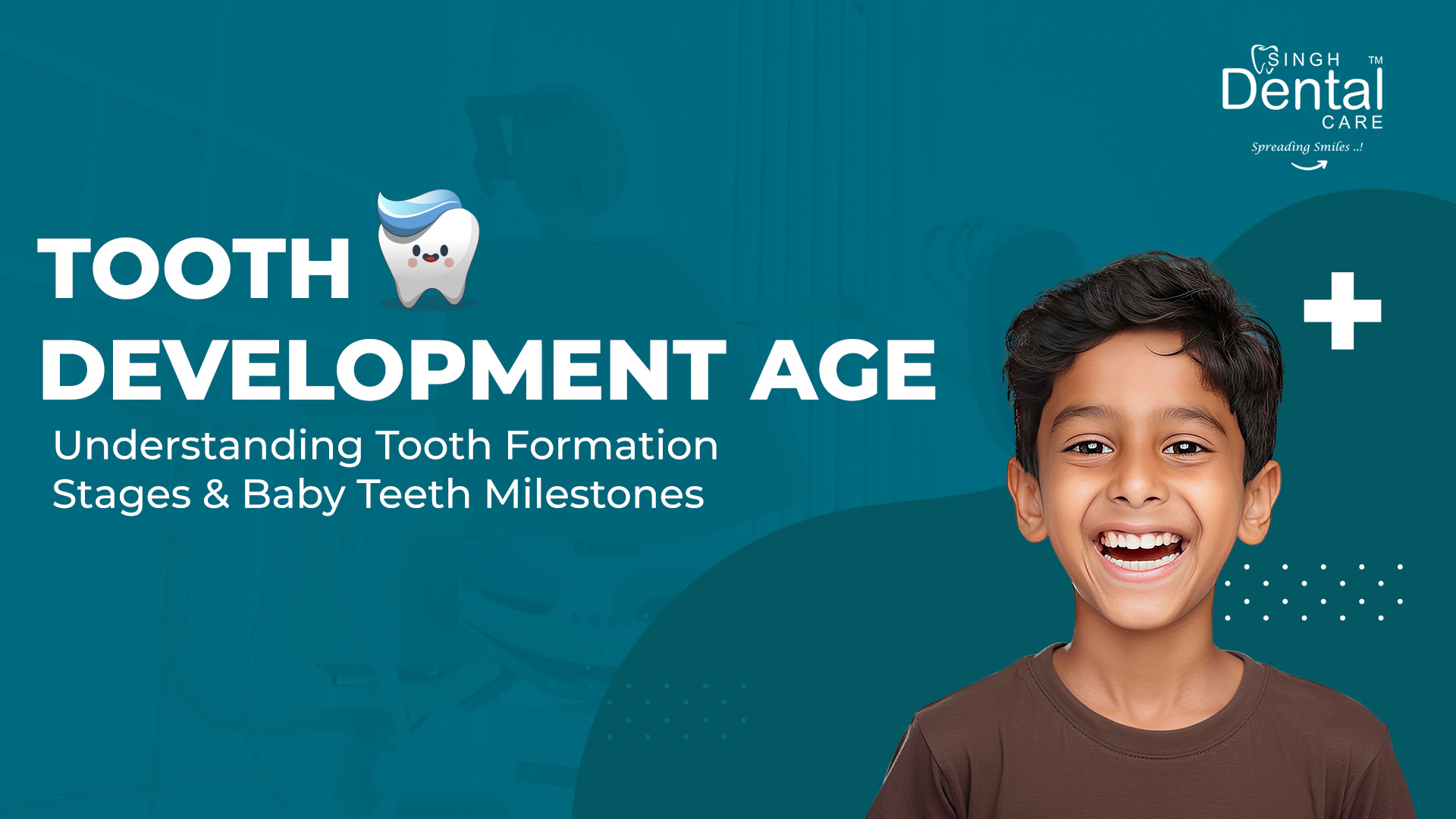
Ever spotted that first tiny tooth peeking out of your baby’s gummy smile and thought, “Wow, it’s happening!”? Tooth development might not be the loudest milestone, but it marks the beginning of an essential journey in your child’s development—and one of the most Googled by new parents.
Let’s take a fun, friendly walk through the timeline of toothy transformations: from those secret behind-the-scenes tooth formation stages to the big, bold arrival of baby teeth. Understanding the tooth development age and the various tooth formation stages can help parents navigate this exciting phase with confidence.
Think of tooth development age as your baby’s dental growth timeline. It’s not just about when the teeth form and emerge—it’s the whole journey. Right from their time in the womb, your baby’s teeth are secretly forming beneath the surface.
For most babies, the first tooth shows up around 6 months—but “normal” is a wide range. Some show up at 4 months, others take their sweet time until after their first birthday.
Before that pearly white appears, there are five distinct stages that it goes through:
These tooth formation stages are happening even before teething starts. So while your baby’s gummy grin is stealing hearts, their mouth is quietly busy behind the scenes.
Typically, a child’s first tooth appears between 6 and 10 months of age—usually the bottom front ones (central incisors). However, this can vary, with some infants teething as early as 3 months or as late as 12 months. Here’s a quick peek at the baby teeth timeline:
Tooth Type | Eruption Age (Months) |
Bottom front (central incisors) | 6–10 months |
Top front (central incisors) | 8–12 months |
Side incisors | 9–13 months |
First molars | 13–19 months |
Canines (cuspids) | 16–22 months |
Second molars | 23–33 months |
By age 3, most toddlers have a full set of 20 baby teeth—and know exactly how to use them on snacks and spoons.
To keep things healthy from the start:
A pediatric dentist can guide you through it all—from teething tips to long-term tooth care.
 Final Thoughts: From Gummy Smiles to Gorgeous Grins
Final Thoughts: From Gummy Smiles to Gorgeous GrinsThe tooth development age is a wild ride—from silent, in-womb beginnings to that proud first grin with tiny teeth. Every baby follows their own rhythm, and every new tooth is worth celebrating (even if it comes with a bit of drool and crankiness).
Keep brushing, keep smiling, and remember: You’re doing a great job, tooth fairy-in-training.
Dr Navneet Kaur
Consultant Pediatric Dentist
Singh Dental Care

WhatsApp us